Tuesday, October 16, 2007
Friday, October 12, 2007
Hundreds strip naked on glacier in global warming protest
Art in its most socially active form...
From YouTube description:
Six hundred people shed their clothes on a glacier in the Swiss Alps to bodily cry out for help against a planetary emergency: global warming.
The nude volunteers posed for us and renowned naked "installation" artist Spencer Tunick on the Aletsch Glacier.
Without clothes, the human body is vulnerable, exposed, its life or death at the whim of the elements. Global warming is stripping away our glaciers and leaving our entire planet vulnerable to extreme weather, floods, sea-level rise, global decreases in carrying capacity and agricultural production, fresh water shortages, disease and mass human dislocations.
If global warming continues at its current rate, most glaciers in Switzerland will completely disappear by 2080, leaving nothing but valleys and slopes strewn with rock debris.
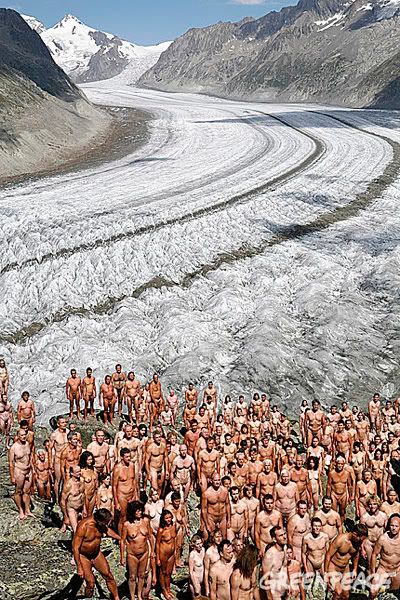
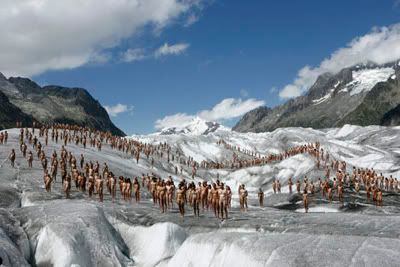
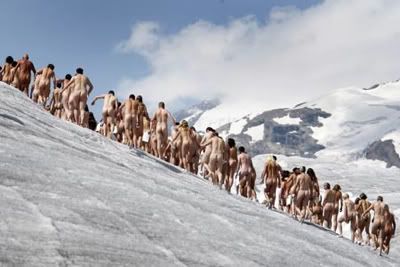
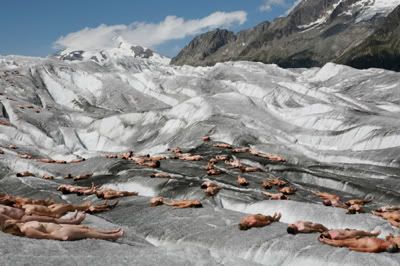
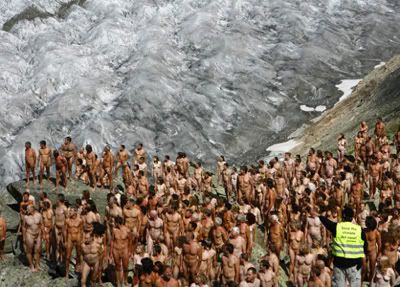
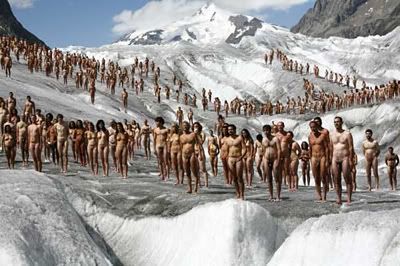
Wednesday, October 10, 2007
Tribute to A Clockwork Orange
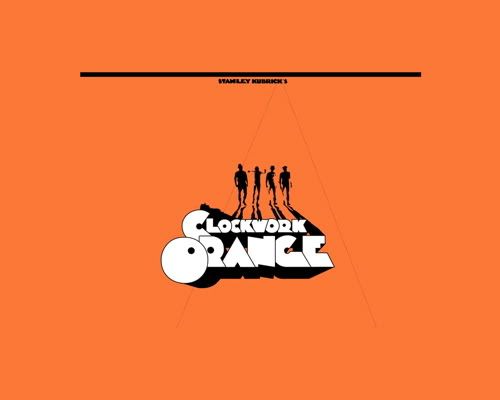
You will find the page at this link:
A Clockwork Orange Tribute
The page will be featured on Stanley's profile, on his top friends list. I will add to it with videos and additional articles I find, many of which debate the violence and artistic nature of the film... and that age-old question of whether life imitates art or vice-versa. Naturally, I think it's brilliant, but depending on the individual may require multiple viewings over the course of many years into adulthood to appreciate, understand, and absorb the material... I wouldn't recommend it for children under the age of 18 or even 21 for that matter, unless you study the background and meaning behind the film, the book it's based on, and Kubrick's philosophy in directing it.

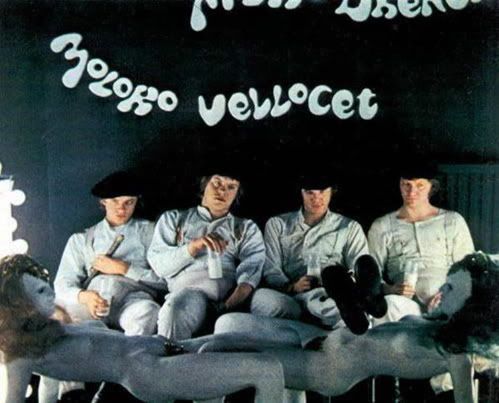
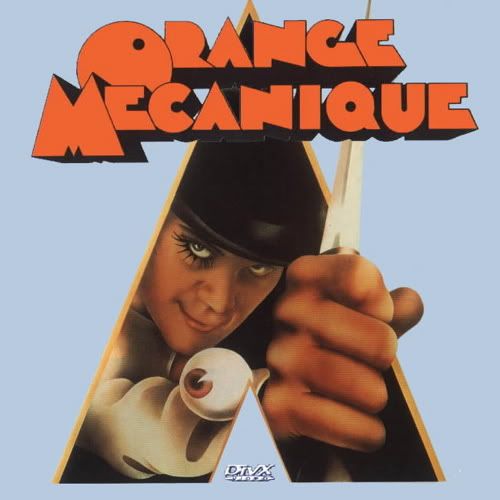
Sunday, October 7, 2007
28 UP (1985)
In 1964, the organization World in Action decided to film the lives of 16 seven-year-olds in the United Kingdom, in order to explore the adage "Give me a child until he is seven and I will give you the man." Michael Apted worked on the film, and decided to continue the series, by documenting these children's lives every 7 years. Neil Hughes is one of those children. The following video is an interview segment with him, at the age of 28 years old. I connect with a lot of what he says, in terms of society, life, and the meaning behind it.
A series of quotes and statements I relate to by Neil Hughes from the Michael Apted documentary 28 UP.
"I don't think I ever had any stability... to be quite honest. I can't think of any time in my life when I ever did. I don't think I've been kicking against anything. I've been kicking in mid-air the whole of my life."
"There's a lot more to do in the mountains. What I found here is that you don't talk about things like the weather, because the weather is all-around. Everyone knows it's been raining. That makes good sense to me."
"I'm not the sort of person who can go to a pub, sit down with a drink, listen to the jukebox, and talk a lot of rubbish. A lot of people find that very relaxing. But if I'm going to talk to somebody. A) I have to be able to hear myself speaking, and B) I have to be talking about something that actually has a meaning."
"I'm not trying to denigrate the way that most people relax. But I can't do that. I'm lost in a noisy pub. I'll sit in the quiet corner of a quiet pub, and then I'll want to talk about literature or something like that, which not everyone will want."
"I don't think I was so much clever. I think I was quite enthusiastic about the subjects I was studying, therefore with some good teaching, I was able to get some good results."
"No formal education can prepare anybody for life. Only life can prepare you for what comes. Sooner or later, you're going to have to cross certain barriers. And I don't think you ever cross those at school or at university. You come across the problem of mixing with other people. But the real problem of becoming a success in the world is something you have to tackle yourself."
"What my background has given me is just being part of a very impersonal society. The most you can hope to achieve is to have the right to climb into a suburban train 5 or 10 times a week, and just about stagger back. The least is just unemployment."
Q: What are the things about modern society that turn you off?
A: The cheap satisfaction in so many things, the aimlessness... but I think the total lack of thought is at the bottom of it.
"Nobody seems to know where they or anybody else is going, and nobody seems to worry. You finish the week. You come home. You plug into the TV set for the weekend, and then you manage to get back to work on Monday. And it seems to me that this is just a slow-path to total brain-washing. And it seems to me that if you have a brain-washed society, then you're heading towards doom. There's no question about that."
"What I look like is not necessarily what I feel like. I'm not claiming that I feel as though I'm in some sort of nirvana. But I'm claiming that if I was living in some sort of suburbia, I'd feel like cutting my throat."
"I don't think I was really taught any sort of policy of living at all by my parents. This is probably one of the biggest mistakes. I was just left to fend for myself in a world in which they seemed completely oblivious of. I found that even when I tried to discuss problems that were facing me in school. My parents didn't seem to be aware of the nature of the problem."
"I sometimes feel when I'm on my own, that I'm losing touch with the way other people live."
"You can't afford to go around looking depressed. That, in itself, is bad enough."
"No, I'm not better than anything or anybody, I'm just somebody with my own particular difficulties, with my own particular obstacles to surpass. And everybody else is doing the exact same thing."
Mamma Roma (1962)
To view Pasolini's tribute, click here: myspace.com/pier_paolo_pasolini
I love all of these scenes, but my favorite is scene 17 when Ettore and his mom take a ride on his new moped... reminds me of my childhood in Italy.
Mamma Roma: Trailer
Add to My Profile | More Videos
Mamma Roma: scene 2
Add to My Profile | More Videos
Mamma Roma: scene 3
Add to My Profile | More Videos
Mamma Roma: scene 4
Add to My Profile | More Videos
Mamma Roma: S17
Add to My Profile | More Videos
Robert Altman Tribute
For those Robert Altman fans out there, I created a tribute page at this link for future reference:
myspace.com/robert_altman
I'll be posting additional photos, videos, etc... as I find them.
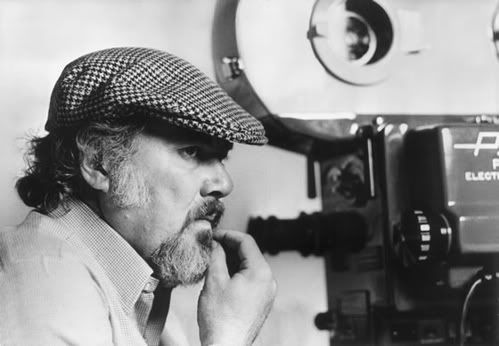

Trailers for two of my Altman favorites: The Player & Gosford Park
Stanley Kubrick - Chicago 1949
Few people know that before he started making movies, Stanley Kubrick was a star photojournalist. In the summer of 1949, Look magazine sent him to Chicago to shoot pictures for a story called "Chicago City of Contrasts."
Thursday, October 4, 2007
Kurt Cobain & RW Fassbinder
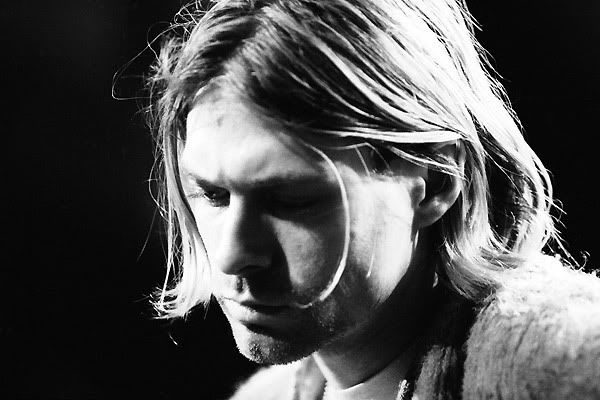
"I don't have the passion anymore, and so remember, it's better to burn out than to fade away."
--Kurt Cobain, 1994 (1967-1994)
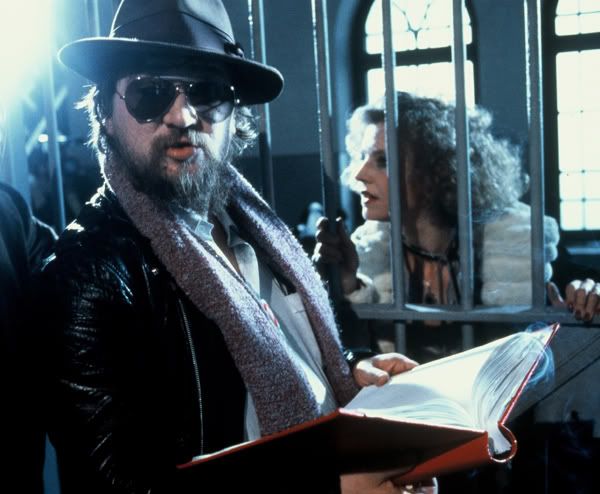
"Everyone must decide for himself whether it is better to have a brief but more intensely felt existence or to live a long and ordinary life."
--Rainer Werner Fassbinder (1945-1982, director, writer, actor, producer, editor... completed 44 projects between 1966 and 1982).
Tuesday, October 2, 2007
Alfred Eisenstaedt Tribute
You may have never heard the name... but you have definitely seen his photographs. "Eisie", as he was often referred to by friends, was one of the most prolific photographers of the 20th century with a career spanning eight decades... taking cover shots for LIFE Magazine on a regular basis. I created this page, as a feature under my PHOTO SPOTLIGHT series page. I actually have his famous V-J (Victory over Japan) Day Kiss photograph framed and hanging in my apartment. It features a nurse and a sailor kissing in Times Square, right on Broadway. Check it out.
myspace.com/alfred_eisenstaedt
A few of my favorites include these below:
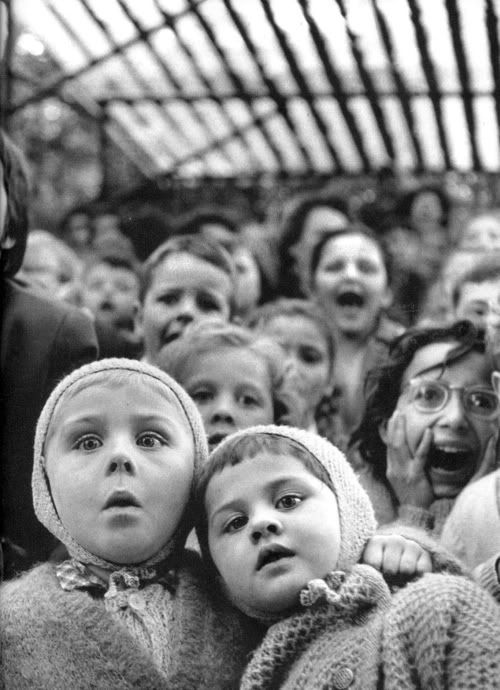
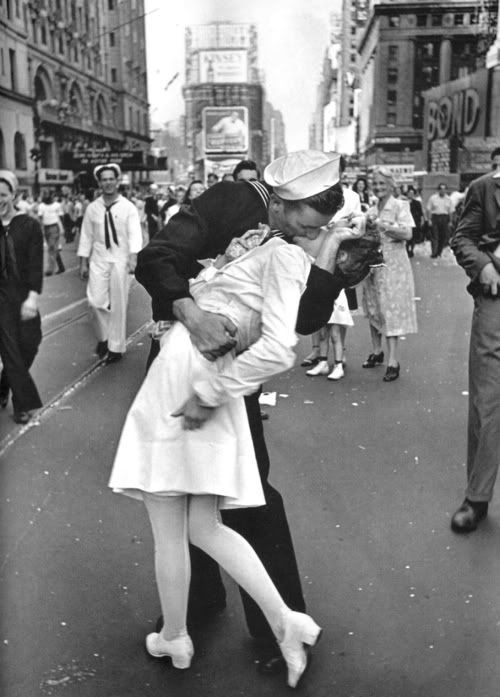

Paris, August 15, 1945
Had to share this beautiful photograph from the same day as the V-J Day Kiss But instead of New York City, American servicemen and women gather in front of "Rainbow Corner" Red Cross club in Paris to celebrate peace. The photographer is unknown, but assumed to have been a US officer.
WWII was one of those rare instances of an arguably just war, at least from the American perspective.
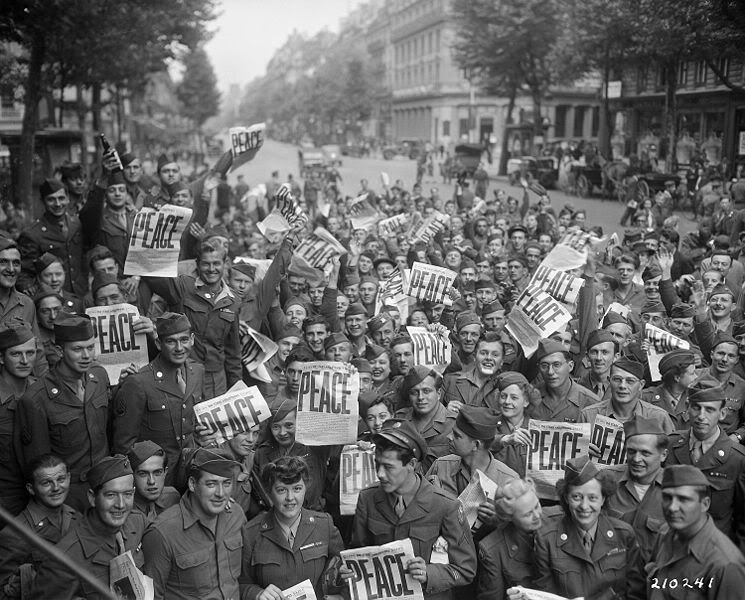
Monday, October 1, 2007
Michael Mann Tribute
For those Michael Mann fans out there, I created a tribute page at this link for future reference:
Michael Mann Tribute
I'll be posting additional photos, videos, etc... as I find them.
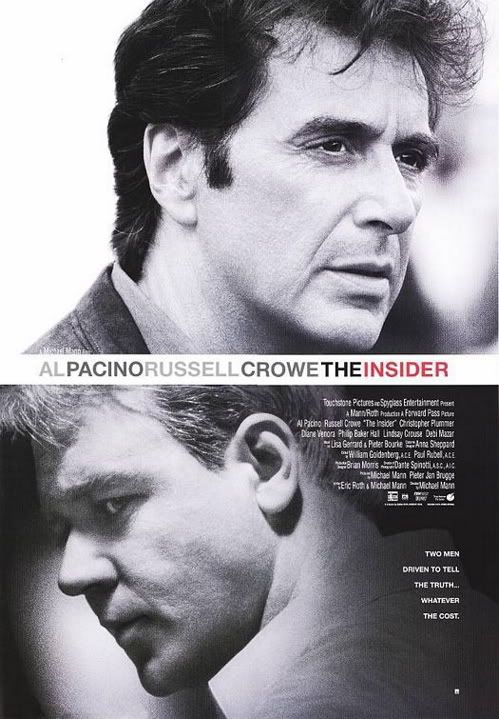
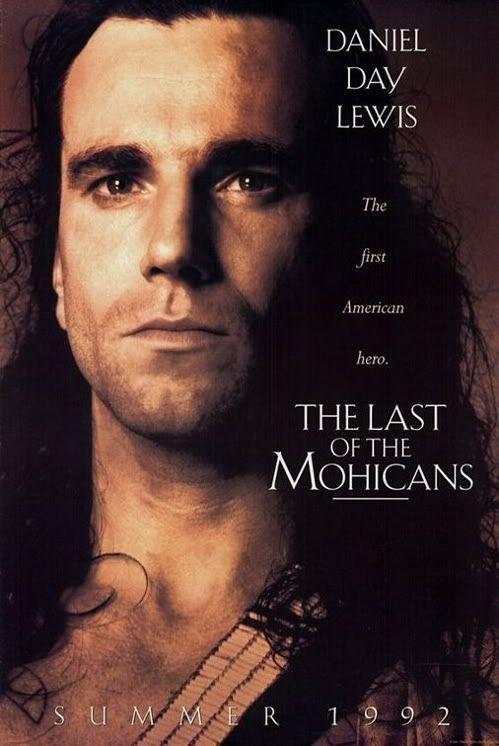
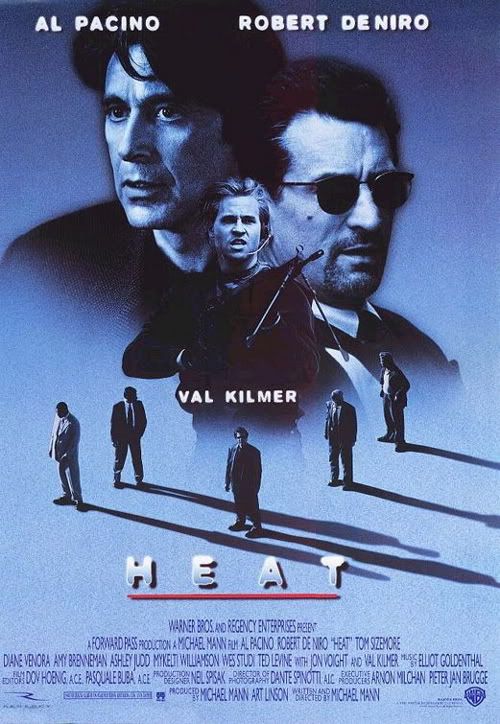
Friday, September 28, 2007
Ansel Adams Tribute
I'm working on a few photographer tribute pages... This is one I just put together.
A few more are on the way as well. Wish I were somewhere so beautiful hiking today...
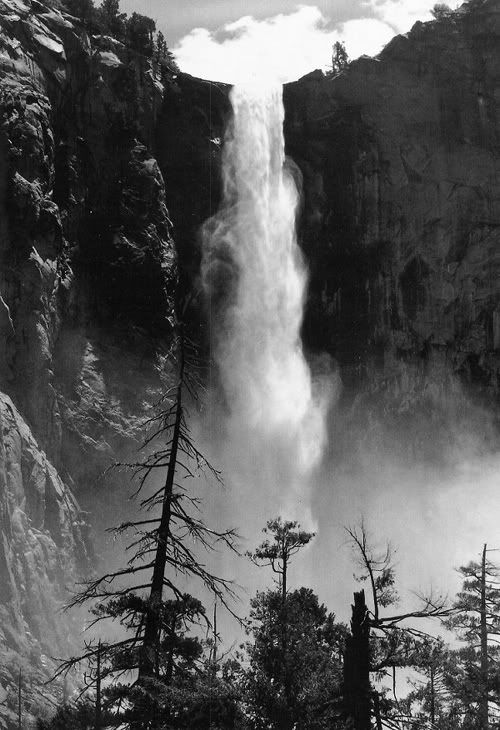
"To photograph truthfully and effectively is to see beneath the surfaces and record the qualities of nature and humanity which live or are latent in all things."
--Ansel Adams
The Lumière Brothers - the birth of cinema
Thursday, September 27, 2007
Scorsese's Taxi Driver
I've honestly accumulated enough material and art on my computer to spend a lifetime sharing things... I could post 100 things today, and 100 more tomorrow.
I never understand when someone says "I'm bored" ... I could spend my entire life reading books & newspapers, watching films and documentaries, looking at beautiful images, creating pages in dedication, and sharing all of it with those curious and interested... without even leaving my apartment.
One of my recent finds from a Belgian site.
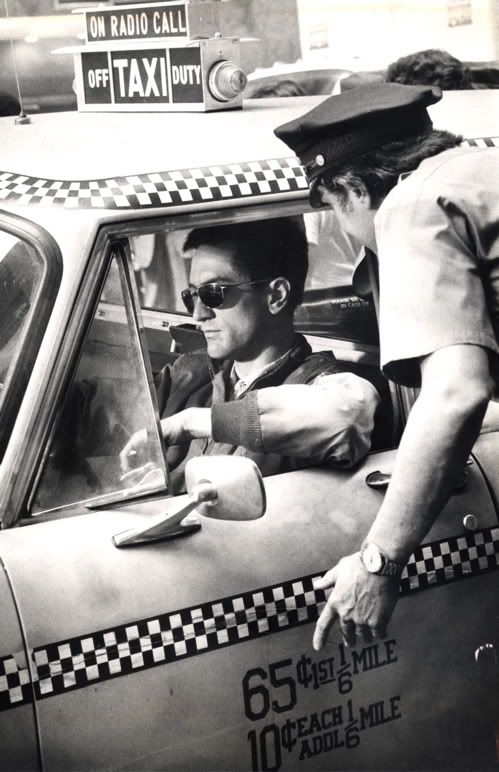
Who knew a pepper could look so beautiful!!

This photo is by the great American photographer Edward Henry Weston. It is titled Pepper #30. Most of Weston's work was done using an 8 by 10 inch view camera. Even though he was a celebrated photographer he survived selling his photos for a humble price of $7-10. Now, they have gone up over 1,000,000% in value. (Naturally... such is the life of an artist :-/)
-Carletto
PS. (My concentration this week has been on photography, particularly great American photographers... as such, I may be creating a few tribute sites to those I love the best... to showcase their work and life.)
Quotations:
"Photography to the amateur is recreation, to the professional it is work, and hard work too, no matter how pleasurable it may be."
"The camera should be used for a recording of life, for rendering the very substance and quintessence of the thing itself, whether it be polished steel or palpitating flesh."
"I cannot believe I learned anything of value in school unless it be the will to rebel."
--Edward Henry Weston (1886-1958)
Mark Rothko Tribute
I just updated the tribute page I created for Mark Rothko in honor of his birthday, with a biography from Wikipedia and a slideshow I put together. A couple of months ago I watched a documentary about his work. The images he created, the life he led, and the way he expressed himself and communicated with the world completely blew me away. I ended up spending an entire weekend in my apartment, scanning the internet for quality images of his paintings... and reading up on him further. Finding the larger images of his paintings took a lot of digging around. The end result of that experience, perhaps as many as 50 hours worth of investment, is this page:
myspace.com/mark_rothko
Enjoy, and celebrate the life of a great master...
I posted a larger version of this slideshow at the bottom of his page. I urge you to view it there.
"I am not an abstract painter. I am not interested in the relationship between form and color. The only thing I care about is the expression of man's basic emotions: tragedy, ecstasy, destiny."
--Mark Rothko (September 25, 1903 - February 25, 1970)
* In the June 13, 1943 edition of the New York Times, Rothko, together with Adolph Gottlieb and Barnett Newman, published the following brief manifesto:
"1. To us art is an adventure into an unknown world, which can be explored only by those willing to take the risks.
"2. This world of imagination is fancy-free and violently opposed to common sense.
"3. It is our function as artists to make the spectator see the world our way not his way.
"4. We favor the simple expression of the complex thought. We are for the large shape because it has the impact of the unequivocal. We wish to reassert the picture plane. We are for flat forms because they destroy illusion and reveal truth.
"5. It is a widely accepted notion among painters that it does not matter what one paints as long as it is well painted." [Rothko said "this is the essence of academicism".]
"There is no such thing as a good painting about nothing.
"We assert that the subject is crucial and only that subject matter is valid which is tragic and timeless. That is why we profess spiritual kinship with primitive and archaic art."
Friday, September 21, 2007
Ingmar Bergman Tribute
I'm happy to announce that I've updated the Bergman tribute page with some gorgeous photographs all along the left-hand side. It was high on my to do list. I think I'm nearly satisfied, and it could end up being one of the best pages I create -- rightfully so for such a brilliant man, who I relate to on artistic, philosophical, existential, and moral levels.
myspace.com/ingmar_bergman
...and don't forget you can check out the videos I posted of his films at this link:
The Ingmar Bergman Channel
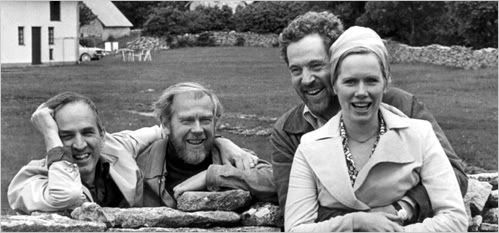
"Our social relationships are limited, most of the time, to gossip and criticizing people's behavior. This observation slowly pushed me to isolate from the so-called social life. My days pass by in solitude."
* "Isak Borg" (Victor Sjöström) in Wild Strawberries (1957)
Wednesday, September 19, 2007
Woody Allen Tribute (update)
It's almost 5am in New York City. I just finished updating the fairly new Woody Allen tribute I created... I posted a series of photos. You can find them at this link:
myspace.com/woody__allen
I'm a fan of Woody's films, especially Annie Hall, Manhattan, Crimes & Misdemeanors, Stardust Memories, Love & Death, and Sweet & Lowdown... There are still many of his films I haven't seen, especially the earlier ones. Overall I relate closely to his writings about life, religion, and relationships... as I do with Ingmar Bergman's, Luis Bunuel's and Federico Fellini's, who were also atheists, provocateurs, and great philosophers... as was Charlie Chaplin for that matter, and countless other remarkable artists.
Random people I've come in contact with over the past few years, as well as 2 or 3 friends, have routinely compared me to Woody Allen and Larry David... I'm sure it has to do with my inherent and at times extreme neuroses (i.e. excessive or irrational anxiety or obsession combined with my inability to keep my mouth shut), which may or may not come across through my profile(s) (half-grin). One of those things that's gotten me in plenty of trouble on dates (slight, half-grimaced chuckle)... Regardless of how beautiful you are on the outside, I have a difficult time keeping my mouth shut, when common sense and clarity are needed.
Oddly enough, the Groucho Marx quote also shows up in the Aquarius description someone pointed me towards a couple of years back -- posted on my profile page... I'm not disputing its veracity in my own experiences.
Alvy Singer: [addressing the camera] There's an old joke - um... two elderly women are at a Catskill mountain resort, and one of 'em says, "Boy, the food at this place is really terrible." The other one says, "Yeah, I know; and such small portions." Well, that's essentially how I feel about life - full of loneliness, and misery, and suffering, and unhappiness, and it's all over much too quickly. The... the other important joke, for me, is one that's usually attributed to Groucho Marx; but, I think it appears originally in Freud's "Wit and Its Relation to the Unconscious," and it goes like this - I'm paraphrasing - um, "I would never want to belong to any club that would have someone like me for a member." That's the key joke of my adult life, in terms of my relationships with women.
[Alvy addresses a pair of strangers on the street]
Alvy Singer: Here, you look like a very happy couple, um, are you?
Female street stranger: Yeah.
Alvy Singer: Yeah? So, so, how do you account for it?
Female street stranger: Uh, I'm very shallow and empty and I have no ideas and nothing interesting to say.
Male street stranger: And I'm exactly the same way.
Alvy Singer: I see. Wow. That's very interesting. So you've managed to work out something?
Bonus video ---
Allen's homage to Fellini's 8 1/2 in Stardust Memories:
Wednesday, September 12, 2007
The Ecstasy of St. Theresa
"Bernini's Ecstasy of St. Theresa (1647-52), it hardly needs saying, is no middle-aged nun rising up the wall in her habit like an untethered balloon, nuns clinging to the hem. This woman is unforgettably beautiful, a match for the beaming seraph. They are, in their way, a couple. We see his exposed breast, infer hers. How could Bernini make visible the tide of ardent feeling washing through Theresa? Here he has the crucial conceptual insight of the entire drama.
He turns her body inside-out so that her covering, her habit, the symbol of chastity and containment, the symbol of her discipline - becomes a representation of what's going on inside her. It's the accomplice of her helpless dissolution into a liquid bliss.
It is, in fact, the climactic shudder itself, a storm surge of churning sensation, cresting and falling as if the marble had been molten. And these billows pour themselves from the smiling angel directly into Teresa's robe, where they join an ocean of heaving waves that folds into hollows and crevices, like surf breaking on a shore.
There's nothing furtive about any of this. Bernini wants us to look and look hard.
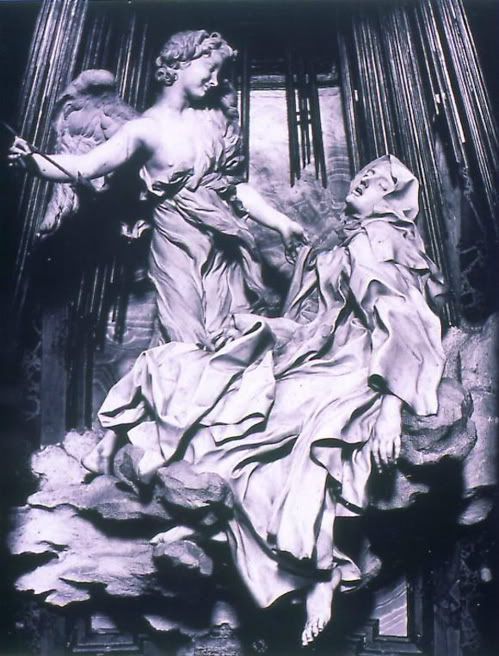
Why is this his greatest masterpiece? Because he's managed to make visible, tangible actually, something we all, if we're honest, know we hunger for, but before which we're properly tongue-tied. Something which has produced more bad writing, more excruciating poems than anything else you can think of.
No wonder, when art historians look at this, they tie themselves in knots to avoid saying the obvious. That we're looking at the most intense, convulsive drama of the body that any of us experience between birth and death. Which is not to say that what we're looking at is just a spasm of erotic chemistry. It's precisely because it isn't just that. Because it is somehow a fusion of physical craving and, choose your word, spiritual or emotional transcendence, that Bernini's Ecstasy of Saint Theresa is a sculpture that possesses the beholder completely, the longer we stare.
So perhaps when that 18th-century French connoisseur said, "If that's divine love, I know it well," he wasn't making a sly joke at all, but doffing his hat to Bernini for using the power of art to make the most difficult, the most desirable thing in the world: the visualization of pure bliss."
© Simon Schama, 2006
Sunday, September 9, 2007
The Man Who Set Film Free
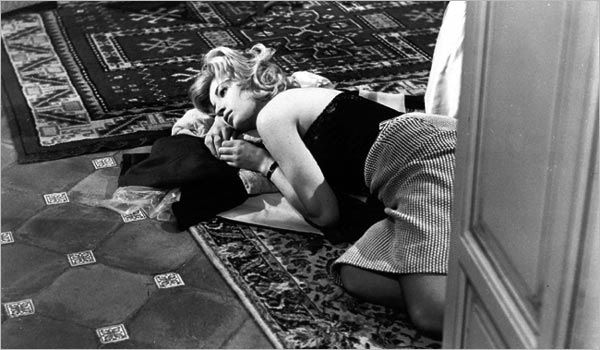
August 12, 2007
The New York Times
By MARTIN SCORSESE
NINETEEN-SIXTY-ONE ... a long time ago. Almost 50 years. But the sensation of seeing “L’Avventura” for the first time is still with me, as if it had been yesterday.
Where did I see it? Was it at the Art Theater on Eighth Street? Or was it the Beekman? I don’t remember, but I do remember the charge that ran through me the first time I heard that opening musical theme — ominous, staccato, plucked out on strings, so simple, so stark, like the horns that announce the next tercio during a bullfight. And then, the movie. A Mediterranean cruise, bright sunshine, in black and white widescreen images unlike anything I’d ever seen — so precisely composed, accentuating and expressing ... what? A very strange type of discomfort. The characters were rich, beautiful in one way but, you might say, spiritually ugly. Who were they to me? Who would I be to them?
They arrived on an island. They split up, spread out, sunned themselves, bickered. And then, suddenly, the woman played by Lea Massari, who seemed to be the heroine, disappeared. From the lives of her fellow characters, and from the movie itself. Another great director did almost exactly the same thing around that time, in a very different kind of movie. But while Hitchcock showed us what happened to Janet Leigh in “Psycho,” Michelangelo Antonioni never explained what had happened to Massari’s Anna. Had she drowned? Had she fallen on the rocks? Had she escaped from her friends and begun a new life? We never found out.
Instead the film’s attention shifted to Anna’s friend Claudia, played by Monica Vitti, and her boyfriend Sandro, played by Gabriele Ferzetti. They started to search for Anna, and the picture seemed to become a kind of detective story. But right away our attention was drawn away from the mechanics of the search, by the camera and the way it moved. You never knew where it was going to go, who or what it was going to follow. In the same way the attentions of the characters drifted: toward the light, the heat, the sense of place. And then toward one another.
So it became a love story. But that dissolved too. Antonioni made us aware of something quite strange and uncomfortable, something that had never been seen in movies. His characters floated through life, from impulse to impulse, and everything was eventually revealed as a pretext: the search was a pretext for being together, and being together was another kind of pretext, something that shaped their lives and gave them a kind of meaning.
The more I saw “L’Avventura” — and I went back many times — the more I realized that Antonioni’s visual language was keeping us focused on the rhythm of the world: the visual rhythms of light and dark, of architectural forms, of people positioned as figures in a landscape that always seemed terrifyingly vast. And there was also the tempo, which seemed to be in sync with the rhythm of time, moving slowly, inexorably, allowing what I eventually realized were the emotional shortcomings of the characters — Sandro’s frustration, Claudia’s self-deprecation — quietly to overwhelm them and push them into another “adventure,” and then another and another. Just like that opening theme, which kept climaxing and dissipating, climaxing and dissipating. Endlessly.
Where almost every other movie I’d seen wound things up, “L’Avventura” wound them down. The characters lacked either the will or the capacity for real self-awareness. They only had what passed for self-awareness, cloaking a flightiness and lethargy that was both childish and very real. And in the final scene, so desolate, so eloquent, one of the most haunting passages in all of cinema, Antonioni realized something extraordinary: the pain of simply being alive. And the mystery.
“L’Avventura” gave me one of the most profound shocks I’ve ever had at the movies, greater even than “Breathless” or “Hiroshima, Mon Amour” (made by two other modern masters, Jean-Luc Godard and Alain Resnais, both of them still alive and working). Or “La Dolce Vita.” At the time there were two camps, the people who liked the Fellini film and the ones who liked “L’Avventura.” I knew I was firmly on Antonioni’s side of the line, but if you’d asked me at the time, I’m not sure I would have been able to explain why. I loved Fellini’s pictures and I admired “La Dolce Vita,” but I was challenged by “L’Avventura.” Fellini’s film moved me and entertained me, but Antonioni’s film changed my perception of cinema, and the world around me, and made both seem limitless. (It was two years later when I caught up with Fellini again, and had the same kind of epiphany with “8 ½.”)
The people Antonioni was dealing with, quite similar to the people in F. Scott Fitzgerald’s novels (of which I later discovered that Antonioni was very fond), were about as foreign to my own life as it was possible to be. But in the end that seemed unimportant. I was mesmerized by “L’Avventura” and by Antonioni’s subsequent films, and it was the fact that they were unresolved in any conventional sense that kept drawing me back. They posed mysteries — or rather the mystery, of who we are, what we are, to each other, to ourselves, to time. You could say that Antonioni was looking directly at the mysteries of the soul. That’s why I kept going back. I wanted to keep experiencing these pictures, wandering through them. I still do.
Antonioni seemed to open up new possibilities with every movie. The last seven minutes of “L’Eclisse,” the third film in a loose trilogy he began with “L’Avventura” (the middle film was “La Notte”), were even more terrifying and eloquent than the final moments of the earlier picture. Alain Delon and Ms. Vitti make a date to meet, and neither of them show up. We start to see things — the lines of a crosswalk, a piece of wood floating in a barrel — and we begin to realize that we’re seeing the places they’ve been, empty of their presence. Gradually Antonioni brings us face to face with time and space, nothing more, nothing less. And they stare right back at us. It was frightening, and it was freeing. The possibilities of cinema were suddenly limitless.
We all witnessed wonders in Antonioni’s films — those that came after, and the extraordinary work he did before “L’Avventura,” pictures like “La Signora Senza Camelie,” “Le Amiche,” “Il Grido” and “Cronaca di un Amore,” which I discovered later. So many marvels — the painted landscapes (literally painted, long before CGI) of “Red Desert” and “Blowup,” and the photographic detective story in that later film, which ultimately led further and further away from the truth; the mind-expanding ending of “Zabriskie Point,” so reviled when it came out, in which the heroine imagines an explosion that sends the detritus of the Western world cascading across the screen in super slow motion and vivid color (for me Antonioni and Godard were, among other things, truly great modern painters); and the remarkable last shot of “The Passenger,” where the camera moves slowly out the window and into a courtyard, away from the drama of Jack Nicholson’s character and into the greater drama of wind, heat, light, the world unfolding in time.
I crossed paths with Antonioni a number of times over the years. Once we spent Thanksgiving together, after a very difficult period in my life, and I did my best to tell him how much it meant to me to have him with us. Later, after he’d had a stroke and lost the power of speech, I tried to help him get his project “The Crew” off the ground — a wonderful script written with his frequent collaborator Mark Peploe, unlike anything else he’d ever done, and I’m sorry it never happened.
But it was his images that I knew, much better than the man himself. Images that continue to haunt me, inspire me. To expand my sense of what it is to be alive in the world.
Wednesday, September 5, 2007
Thomas Hart Benton
--Thomas Hart Benton (1889-1975)
I NEEDED to hear that after an emotionally and physically exhausting day!
PS. The NYC public library is gonna be the death of me. I picked up 18 new dvds today (for free)... mostly art & history documentaries. :-)
Benton, Thomas Hart, regionalist American painter, known for his vigorous, colorful murals of the 1930s, mostly of rollicking scenes from the rural past of the American South and Midwest. Benton was born in Neosho, Missouri. He studied at the Art Institute of Chicago and then spent three years in Paris. Living in New York City after 1912, Benton turned away from modernism and gradually developed a rugged naturalism that affirmed traditional rural values. By the 1930s he was riding a tide of popular acclaim. Benton returned to Missouri, taught at the Kansas City Art Institute, and continued to paint both panels and murals. His mural in the state capitol in Jefferson City (1935) stirred protests because of its open portrayals of some of the seamier facets of Missouri's past. Benton's most famous student was Jackson Pollock, who studied with Benton at the Art Students League in New York City from 1929 to 1931.
Monday, September 3, 2007
People die at 21
"In this country, people die at 21. They die emotionally at 21, maybe even younger now. For those of us who are lucky not to die at 20, we keep on going. And my responsibility as an artist... is to help people get over 21."
--John Cassavetes
"The films are a road map through emotional and intellectual terrains... that provide a solution to how one can save pain. As people, we know that we are petty, vicious... violent and horrible. But my films make an effort to contain the depression within us... and to limit the depression to those areas that we can actually solve. The resolution of the films... is the assertion of a human spirit."
--John Cassavetes
myspace.com/john_cassavetes
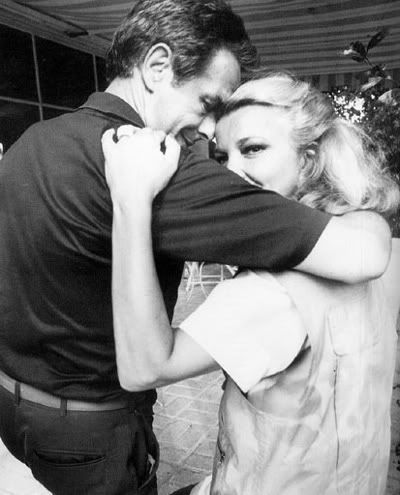
The more I read and learn about the life and thoughts of filmmaker John Cassavetes, the more I feel a deep, personal and intellectual connection to his ideas and feelings about life and art. For many years, I've been saying that people graduate from college or high school, and put themselves out to pasture. They stop growing emotionally, intellectually, socially, etc... I've lost a great many acquaintances and potential relationships from my youth because of this. They stagnate, and I keep moving. They take jobs, make money, and pursue the standard path of consumption and possession. I seek answers, meaning, resolution, beauty, inspiration... I'm not saying it's easy, but I don't think life is supposed to be. Mine has never been.
-Carletto
Saturday, August 25, 2007
Le notti di Cabiria
This is the cutest video of the happy couple at the Cannes Film Festival on May 15, 1957, promoting Le notti di Cabiria. You'll have to go to the link, since I cannot embed the video in the bulletin:
Federico Fellini et Giulietta Masina
It's only about 37 seconds long. But worth it, if you're a fan!
Thursday, July 5, 2007
She walks in beauty like the night...
She walks in Beauty, like the night
Of cloudless climes and starry skies;
And all that's best of dark and bright
Meet in her aspect and her eyes:
Thus mellowed to that tender light
Which Heaven to gaudy day denies.
One shade the more, one ray the less,
Had half impaired the nameless grace
Which waves in every raven tress,
Or softly lightens o'er her face;
Where thoughts serenely sweet express,
How pure, how dear their dwelling-place.
And on that cheek, and o'er that brow,
So soft, so calm, yet eloquent,
The smiles that win, the tints that glow,
But tell of days in goodness spent,
A mind at peace with all below,
A heart whose love is innocent!
~Lord Byron
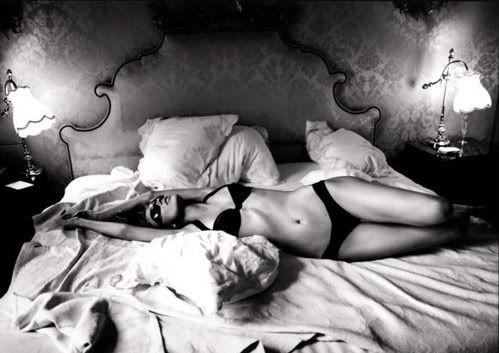

Saturday, June 23, 2007
Annie Hall
-Annie Hall to Woody Allen as she pulls away in a cab
"That's fine. That's fine. That's great. Well, I don't know what I did wrong... I mean I can't believe this. Somewhere she cooled off to me."
-Woody Allen to himself
"Is it something that I did?"
-Woody to an older woman walking on the sidewalk.
"It's never something you do. That's how people are. Love fades."
-Older woman
"Love fades. God, that's a depressing thought."
-Woody to himself as he continues walking on the sidewalk
"You look like a very happy couple. Are you?"
-Woody as he stops an attractive, well-dressed couple on the street
"Yeah."
-Attractive girl in couple responds.
"So, how do you account for it?"
-Woody
"Um... I'm very shallow and empty, and I have no ideas... and nothing interesting to say."
-Attractive girl in couple responds.
"Ya, and I'm exactly the same way."
-Attractive man in couple responds.
"I see. Well, that's very interesting. So you've managed to work out something."
-Woody Allen
SO funny... I knew there was a reason I never enjoyed dating.
My favorite line: "I would never want to belong to any club that would have someone like me for a member." -Groucho Marx (attributed to)
and Woody goes on to say: "That's the key joke of my adult life in terms of my relationships with women."
Thursday, June 14, 2007
Parkinson meets Henry Fonda (1975)
I uploaded this 5 minute part of an interview that Henry Fonda did with the British journalist Parkinson in 1975 on Sergio Leone's tribute space earlier today...
myspace.com/sergio_leone
Henry Fonda was such a wonderful, brilliant actor... and a great story-teller! Watch and listen as he talks about his experience working with the "Italian" (Sergio Leone) on the amazing film Once Upon A Time in the West (1968)...
I just LOVE the way he sets up the first few minutes of the film, and tells us what Sergio was thinking when he cast Fonda... You'll definitely get a laugh.
Enjoy!
Parkinson Meets Henry Fonda
Add to My Profile | More Videos
Thursday, June 7, 2007
The Kid (1921)
The Kid Trailers
Add to My Profile | More Videos
The Kid (intro)
Add to My Profile | More Videos
The Kid, Part 1
Add to My Profile | More Videos
The Kid, Part 2
Add to My Profile | More Videos
The Kid, Part 3
Add to My Profile | More Videos
The Kid, Part 4
Add to My Profile | More Videos
The Kid, Part 5
Add to My Profile | More Videos
Sunday, May 6, 2007
Orson Welles & The War of the Worlds

Happy birthday Mr. Welles :-)
To celebrate, I suggest reading the entire article. It's VERY interesting...
click here for Orson Welles tribute
The ability to confuse audiences en masse may have first become obvious as a result of one of the most infamous mistakes in history. It happened the day before Halloween, on Oct. 30, 1938, when millions of Americans tuned in to a popular radio program that featured plays directed by, and often starring, Orson Welles. The performance that evening was an adaptation of the science fiction novel The War of the Worlds, about a Martian invasion of the earth. But in adapting the book for a radio play, Welles made an important change: under his direction the play was written and performed so it would sound like a news broadcast about an invasion from Mars, a technique that, presumably, was intended to heighten the dramatic effect.
As the play unfolded, dance music was interrupted a number of times by fake news bulletins reporting that a "huge flaming object" had dropped on a farm near Grovers Mill, New Jersey. As members of the audience sat on the edge of their collective seat, actors playing news announcers, officials and other roles one would expect to hear in a news report, described the landing of an invasion force from Mars and the destruction of the United States. The broadcast also contained a number of explanations that it was all a radio play, but if members of the audience missed a brief explanation at the beginning, the next one didn't arrive until 40 minutes into the program.
At one point in the broadcast, an actor in a studio, playing a newscaster in the field, described the emergence of one of the aliens from its spacecraft. "Good heavens, something's wriggling out of the shadow like a gray snake," he said, in an appropriately dramatic tone of voice. "Now it's another one, and another. They look like tentacles to me. There, I can see the thing's body. It's large as a bear and it glistens like wet leather. But that face. It...it's indescribable. I can hardly force myself to keep looking at it. The eyes are black and gleam like a serpent. The mouth is V-shaped with saliva dripping from its rimless lips that seem to quiver and pulsate....The thing is raising up. The crowd falls back. They've seen enough. This is the most extraordinary experience. I can't find words. I'm pulling this microphone with me as I talk. I'll have to stop the description until I've taken a new position. Hold on, will you please, I'll be back in a minute."
As it listened to this simulation of a news broadcast, created with voice acting and sound effects, a portion of the audience concluded that it was hearing an actual news account of an invasion from Mars. People packed the roads, hid in cellars, loaded guns, even wrapped their heads in wet towels as protection from Martian poison gas, in an attempt to defend themselves against aliens, oblivious to the fact that they were acting out the role of the panic-stricken public that actually belonged in a radio play. Not unlike Stanislaw Lem's deluded populace, people were stuck in a kind of virtual world in which fiction was confused for fact.
News of the panic (which was conveyed via genuine news reports) quickly generated a national scandal. There were calls, which never went anywhere, for government regulations of broadcasting to ensure that a similar incident wouldn't happen again. The victims were also subjected to ridicule, a reaction that can commonly be found, today, when people are taken in by simulations. A cartoon in the New York World-Telegram, for example, portrayed a character who confuses the simulations of the entertainment industry with reality. In one box, the character is shown trying to stick his hand into the radio to shake hands with Amos n' Andy. In another, he reports to a police officer that there is "Black magic!!! There's a little wooden man -- Charlie McCarthy -- and he's actually talking!"
In a prescient column, in the New York Tribune, Dorothy Thompson foresaw that the broadcast revealed the way politicians could use the power of mass communications to create theatrical illusions, to manipulate the public.
"All unwittingly, Mr. Orson Welles and the Mercury Theater of the Air have made one of the most fascinating and important demonstrations of all time," she wrote. "They have proved that a few effective voices, accompanied by sound effects, can convince masses of people of a totally unreasonable, completely fantastic proposition as to create a nation-wide panic.
"They have demonstrated more potently than any argument, demonstrated beyond a question of a doubt, the appalling dangers and enormous effectiveness of popular and theatrical demagoguery....
"Hitler managed to scare all of Europe to its knees a month ago, but he at least had an army and an air force to back up his shrieking words.
"But Mr. Welles scared thousands into demoralization with nothing at all."
In the 1950s, America had another taste of the power that simulations have, to draw people into a world of delusional fantasy, when paired with mass communications. This time it was revealed that a number of television game shows were simulations, in which contestants who knew the answers ahead of time were pretending to guess at their responses. But unlike the invasion from Mars, here the fakery was unambiguously intentional; it was the work of producers who had concluded they could create fictional game shows that would be more exciting than the real thing.
Once again, there was a shocked reaction from the public. Once again, those involved became objects of public anger. And, as happened with the Orson Welles broadcast, an effort was made to ensure that such manipulations wouldn't recur.
But in 1990, it happened again. Audiences around the world discovered that they were taken in by the ultimate Hollywood illusion in which two performers faked their own talent, lip-syncing, to create the impression they were singing. What millions of fans had believed were two talented singers was actually a composite, another seamless interweaving of sensory simulations in which two people provided the visuals, while vocalists provided the audio.
As in the previous two instances, there was a stunned response. But unlike the experience of 1938 or even the 1950s, the social context was different because simulations had become commonplace, and attempts to use them to trick the public were the rule rather than the exception. Also by this time, a global culture had developed, which meant that tens of millions of people around the world were drawn into the same illusion.
One might say that War of the Worlds and the game show scandal foreshadowed the age of simulation that was still to come. Allowing for a little poetic overstatement, the Milli Vanilli scandal served as a rite of passage or symbolic marker, making clear that we now live in an age of simulation confusion in which our tendency to mistake fakes for what they imitate has become one of the characteristic problems of the age.
More to the point, we live in a time in which the ability to create deceptive simulations, especially for television, has become essential to the exercise of power. And the inability to see through these deceptions has become a form of powerlessness. Those who let themselves be taken in by the multiple deceptions of politics, news, advertising and public relations, are doomed, like the more gullible members of the radio audience in 1938, to play a role in other people's dramas, while mistakenly believing that they are reacting to something genuine.
source
Saturday, May 5, 2007
Rainer Maria Rilke Tribute
HEARTBEAT

Only mouths are we. Who sings the distant heart
which safely exists in the center of all things?
His giant heartbeat is diverted in us
into little pulses. And his giant grief
is, like his giant jubilation, far too
great for us. And so we tear ourselves away
from him time after time, remaining only
mouths. But unexpectedly and secretly
the giant heartbeat enters our being,
so that we scream ----,
and are transformed in being and in countenance.
--Rainer Maria Rilke

FAVORITE QUOTES:
"All the soarings of my mind begin in my blood."
"Believe that with your feelings and your work you are taking part in the greatest; the more strongly you cultivate this belief, the more will reality and the world go forth from it."
"I want to be with those who know secret things or else alone."
"A person isn't who they are during the last conversation you had with them - they're who they've been throughout your whole relationship."
"It is a tremendous act of violence to begin anything. I am not able to begin. I simply skip what should be the beginning."
"It is good to be solitary, for solitude is difficult; that something is difficult must be a reason the more for us to do it."
Monday, April 23, 2007
The US vs. John Lennon (2006)
Hi everyone... I highly recommend the documentary film The U.S. vs. John Lennon (2006). I rented the film this past week from Blockbuster.
I believe John Lennon is one of those unique and inspiring individuals - artist, intellectual, and activist - who will live forever, and always be remembered as a great part of the world's history. The footage of him alone (which is fairly extensive) in this film is beautiful and uplifting. If only we had artists and people today, who were this vocal, political, unpretentious, and fearless... (I'm sure some will mention Bono of U2, but in my opinion he and several in the Hollywood establishment do not have the same charisma, nor the intellect to match John's. They've also allowed themselves to be marginalized to the far left by the media and the government.) There are many parallels between Vietnam and the current war in Iraq... but the activist spirit of the late 60s and 70s seems to have dissipated in our American-Idol world.
Enjoy these clips and spread the word!
The first 15 minutes of the film:
The U.S. vs. John Lennon
Add to My Profile | More Videos
another wonderful scene
The U.S. vs. John Lennon: S7-8
Add to My Profile | More Videos
Wednesday, February 7, 2007
Jesus Camp (2006)
I'm going to post some scenes and write/blog about the documentary film, Jesus Camp, over the next few days. I just watched it the other night, and I believe it's an important film for all Americans to see. The film is presented without bias and does not pass specific judgment on any of the individuals appearing in the film or their message. I'm sure those who are more open and leftist will find the movie shocking and disturbing, while those on the right and believers in Evangelical Christianity will find the film truthful and offering hope for their future goals.
On a personal level, I seek truth and understanding in all aspects of life. I ask a lot of questions. I seek evidence before forming an opinion, and I don't accept things because "someone told me so" or because a book written a few hundred or a few thousand years ago "proclaimed it".
Having studied public policy, international affairs, and terrorism, I am a VERY firm believer in the separation of church and state. I do not believe in any form of religious fundamentalism, and in my opinion there is very little difference between Evangelical Christianity and Islamic Fundamentalism... or for that matter what NAZI Germany espoused in its message of a superior Aryan race pre-World War II. The foundation behind all three is the lack of acceptance of anyone that is different. The idea that their beliefs are true and righteous, and everyone else is wrong, of lesser value in this world, or going to "hell".
So, here I present the first 20 minutes or so of the film Jesus Camp. I urge all of you to go out and rent it.
Jesus Camp: S1-5
Add to My Profile | More Videos
Facts:
25% of Americans describe themselves as Evangelical Christians = 80 million people
75% of home-schooled kids in America are Evangelical Christians.
Interesting quotes from this segment:
"God can do anything. God can fix the world. This is a sick world. Well, then, let's just fix this whole world... Kids you gotta change things. We hold the keys .We can change the world."
"God I'm here to be trained. I'm willing God. I'll do what you want me to do. I'll say what you want me to say."
I can go into a playground of kids that don't know anything about Christianity. I can lead them to the Lord in just no time at all, and in no time, they can be seeing visions. They are so open and so usable in Christianity.
If you look at the world's population, 1/3 of that 6.7 billion people are children under the age of 15... Where should we be putting our efforts? Where should we be putting our focus?
I'll tell you where our enemies are putting it. They're putting it on the kids. They're going into the schools. You go into Palestine, and I can take you to some websites that will absolutely shake you to your foundations, and show you photographs of where they take their kids to camps, like we take our kids to bible camps. And they're putting hand-grenades in their hands. They're teaching them how to put on bomb-belts. They're teaching them how to use rifles and machine-guns. It's no wonder that with that kind of intense training and discipling, that those young people are ready to kill themselves for the cause of Islam.
I want to see young people who are as committed to the cause of Jesus Christ, as the young people are to the cause of Islam. I want to see them as radically laying down their lives for the Gospel as they are over in Pakistan, in Israel, in Palestine, and all those different places.
You know, because we have, excuse me, because we have the truth.
I will say there is a friendlier environment now in the United States towards Christianity, than there has been in my lifetime. And a lot of it has to do, just in the last few years, with President Bush. He has really brought some credibility to the Christian faith. He's been very open, blatantly open about his faith in God. This moment, right now today, is a fulfillment of prophecy.
We've got to stand up, and take back the land.
"If you look at creationism, you realize it's the only possible answer to all the questions."
"Did you get to the part on here where it says that science doesn't prove anything? And it's really interesting when you look at it that way."
"There are two kinds of people in the world. People who love Jesus, and people who don't."
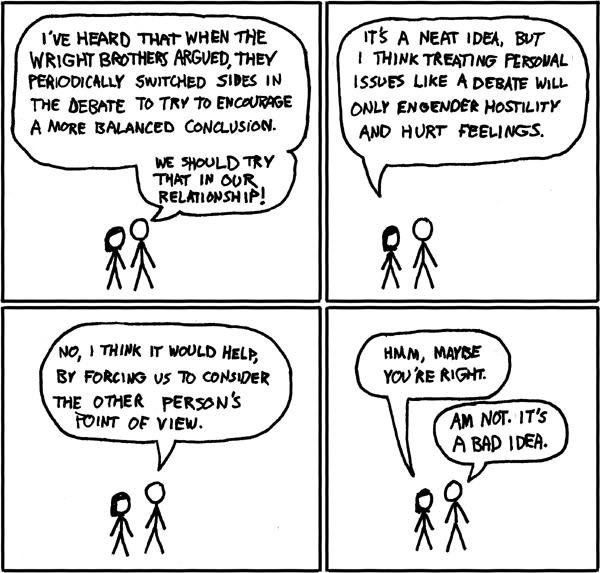

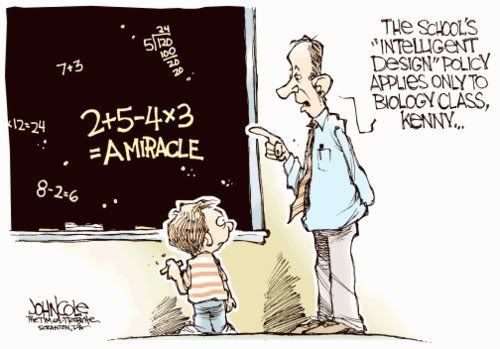
Thursday, February 1, 2007
Jean-Luc Godard Tribute
I created a new director tribute, in honor of the esteemed and beloved Jean-Luc Godard... I will post any and all Godard videos on this site, and will add new materials and photographs as I find them.
myspace.com/jeanluc_godard
Le coup du mépris: Interview with Godard
Add to My Profile | More Videos
Le Mépris: Opening
Add to My Profile | More Videos
Bande à part: The Madison
Add to My Profile | More Videos
Tuesday, January 16, 2007
Wong Kar-Wait Tribute
These are all words that I think of and visually experience when watching Hong Kong director Wong Kar-Wai's gorgeous films... If you have not heard of him or seen his films, check out these clips, and consider his work.
He is one of the very few contemporary directors whose work I appreciate, love, and admire... For this reason, I felt compelled to pay him special tribute.
New Tribute Page At:
myspace.com/karwaiwong
Some beautiful videos of his films:
In the Mood for Love Trailer
Days of Being Wild
Please contribute:
![]()




